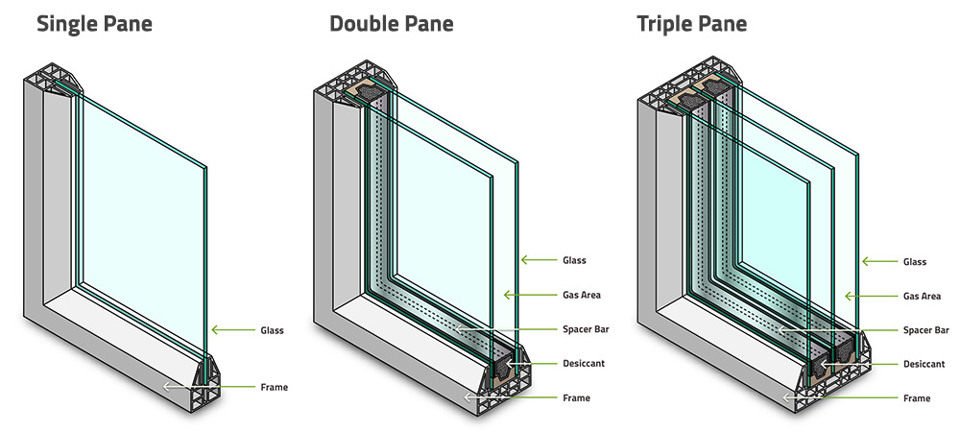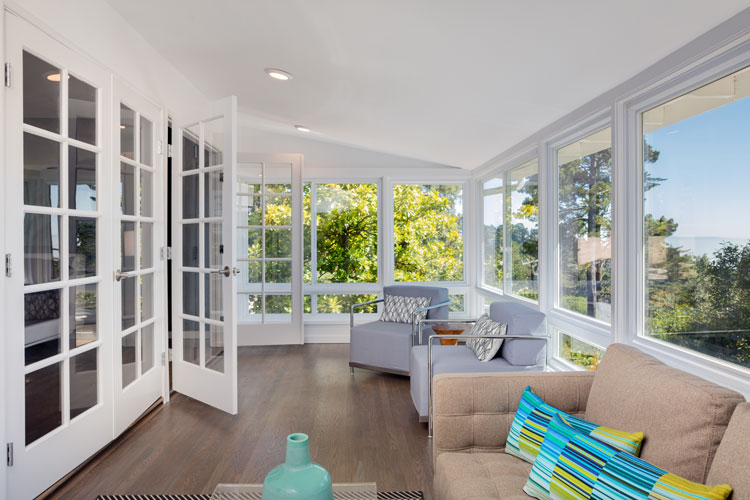Upgrading your home with triple pane windows is a smart choice for enhancing energy efficiency, comfort, and overall home value. These advanced windows go beyond the capabilities of traditional double-pane options, offering superior insulation and a range of benefits that make them a worthwhile investment for any homeowner. In this guide, we’ll explore the features, benefits, and costs associated with triple pane windows, helping you decide if they’re the right fit for your home.
What Are Triple Pane Windows?
Triple pane windows consist of three layers of glass, separated by air or gas-filled spaces that significantly improve insulation compared to double-pane windows. The design helps to reduce heat transfer, keeping your home warmer in the winter and cooler in the summer. This advanced insulation makes triple pane windows an excellent choice for homeowners looking to improve energy efficiency and indoor comfort.

Benefits of Triple Pane Windows
The advantages of triple pane windows are numerous, offering improvements in several key areas:
- Enhanced Insulation: The extra layer of glass in triple pane windows provides superior insulation, reducing heat loss in winter and minimizing heat gain in summer.
- Energy Efficiency: By improving insulation, triple pane windows can lead to significant reductions in energy bills, making them a cost-effective option over time.
- Noise Reduction: These windows are excellent for soundproofing, blocking out more external noise than double-pane or single-pane windows.
- Increased Comfort: With better insulation and noise reduction, triple pane windows contribute to a more comfortable living environment throughout the year.
Comparing Triple Glazed Windows vs. Double Pane Windows
When deciding between triple glazed windows (another term for triple pane) and double pane windows, consider the following differences:
| Feature | Triple Pane Windows | Double Pane Windows |
|---|---|---|
| Insulation | Up to 50% better insulation | Standard insulation for most climates |
| Noise Reduction | Superior soundproofing | Good, but less effective in noisy environments |
| Energy Efficiency | High, leading to lower energy bills | Moderate, with decent energy savings |
| Cost | Higher initial cost, with long-term savings | Lower upfront cost, with moderate energy savings |
The Importance of Insulated Triple Pane Windows
Insulated triple pane windows are designed to maximize thermal performance by reducing heat transfer between your home’s interior and exterior. The spaces between the glass layers are often filled with inert gases like argon or krypton, which enhance the window’s insulating properties. These features help maintain a consistent indoor temperature, reduce the need for heating and cooling, and lower your energy bills.

Are Triple Pane Windows Worth the Investment?
The triple pane window cost may be higher than that of double-pane windows, but the long-term benefits often outweigh the initial investment. Factors to consider when evaluating the cost include:
- Window Size and Style: Larger windows or custom designs typically cost more than standard sizes.
- Frame Material: The material used for the window frame (e.g., vinyl, wood, or aluminum) can affect the overall cost.
- Installation: Professional installation is crucial for optimal performance, and costs may vary based on the project’s complexity and the contractor’s experience.
Conclusion
Triple pane windows are an excellent investment for homeowners looking to improve energy efficiency, comfort, and overall property value. With benefits like enhanced insulation, noise reduction, and long-term energy savings, these windows offer a superior solution for creating a more comfortable and efficient living environment. If you’re considering upgrading your windows, the advantages of triple pane windows make them a compelling option to explore.
